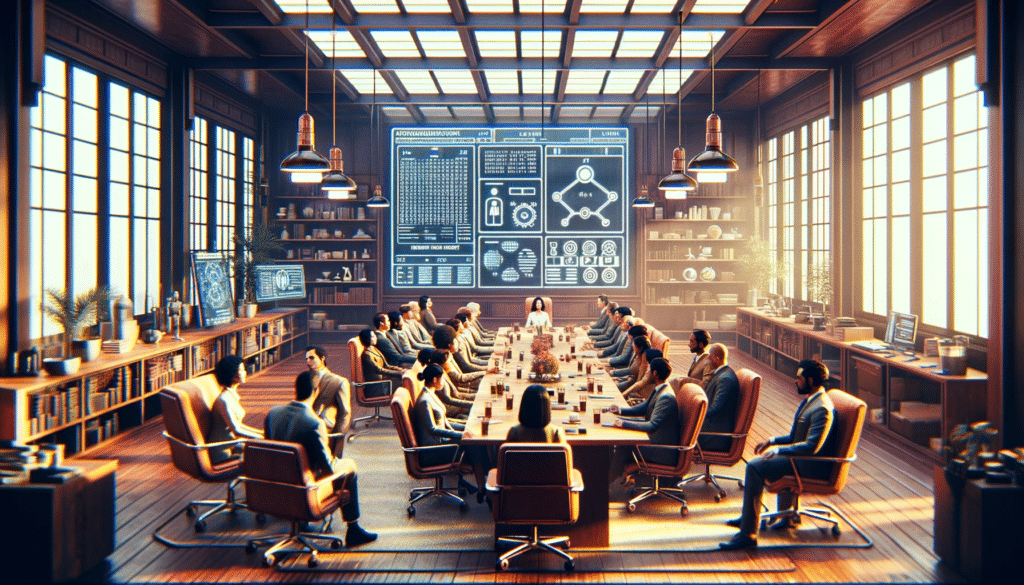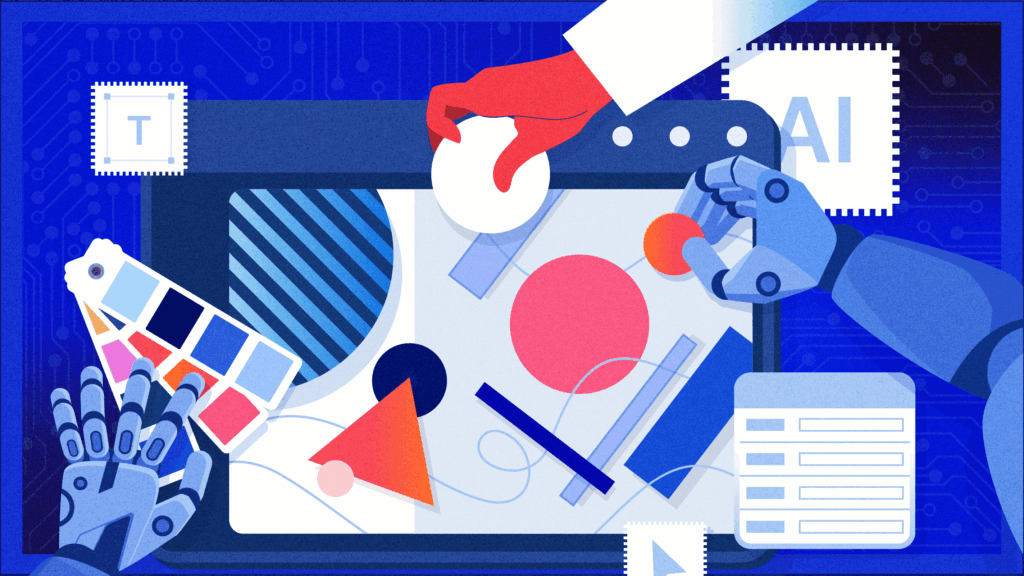Non-determinism has emerged as a double-edged sword within the realm of generative AI. This characteristic defining systems that yield different outputs from the same inputs under varying conditions mirrors the complexity and unpredictability of human cognition and natural phenomena. Through systems like ChatGPT, the essence of non-deterministic responses is unveiled, showcasing the system’s ability to generate diverse outcomes from a singular query. Such variability, far from being a drawback, is increasingly recognized for its strategic advantages in fostering flexibility, navigating uncertainty, and personalizing user experiences across various business and creative domains. However, this very unpredictability also presents challenges, especially in scenarios demanding consistency, transparency, and efficiency. As we delve deeper into the implications of non-determinism for both its potential and pitfalls, it becomes clear that the judicious application of generative AI, governed by thoughtful oversight, is paramount in harnessing its transformative power while mitigating risks associated with its indeterminate nature.

Non-determinism as an advantage
Non-deterministic systems, a fundamental characteristic of machine learning models including generative AI, are intriguing in their operation. Take, for instance, a simple experiment with ChatGPT: ask it, “Why did Napoleon lose the battle of Waterloo?” The example below is an interaction with different responses to the given question.

The variety in responses shows the non-deterministic nature of generative AI. This means that the system can produce different outcomes from the same input under different instances. This isn’t unique to AI; it’s something we see in everyday phenomena like weather predictions, financial markets, or even our decision-making processes.
This variability is actually a strength in many business contexts. For example, generative AI can drastically improve personal productivity by aiding in document editing, creating new presentations, or summarizing lengthy reports for easier digestion. It’s also becoming a game-changer in software development, where it can suggest code, generate test cases, and thereby speed up project timelines while enhancing quality. When deciding if a use case can benefit from generative AI (a non-deterministic system), below are (not limited to) three key use cases where a non-deterministic system can provide value:
Flexibility and creative solutions
Non-deterministic systems shine in scenarios where adapting and offering creative solutions is crucial. They’re designed to think outside the box, providing innovative answers to complex challenges. This is particularly valuable in the realm of artificial intelligence, where these systems can learn from new information and tailor their actions, leading to groundbreaking advancements and solutions.
Thriving in uncertainty
These systems are built to navigate through uncertainty and complexity effortlessly. Whether it’s predicting the weather, analyzing stock market trends, or making strategic decisions, non-deterministic systems assess a multitude of possibilities, offering a spectrum of outcomes. This capability is key for making informed decisions in an ever-changing environment, where relying on a single, fixed answer is often not enough.
Personalized experiences
Non-deterministic systems excel at delivering tailored experiences, adapting to each user’s unique preferences or actions. This adaptability is what powers recommendation engines or interactive services, enabling them to present users with fresh, unexpected options that enhance engagement. The ability to surprise and delight users by not being predictable adds significant value to customer interactions, making services more engaging and responsive to individual needs.
In summary, the non-deterministic nature of generative AI is a powerful ally in both enhancing productivity and offering new insights, proving its worth as a transformative tool in the modern business landscape.
Non-determinism as a disadvantage
Just as every coin has two sides, using unpredictable (non-deterministic) systems in situations that typically demand predictable outcomes has its pros and cons. It’s crucial to identify when this unpredictability might not serve our best interests. Here are key considerations, especially when it comes to the principle of “idempotency”—a concept popularized in cloud computing, which demands that an operation done repeatedly should always produce the same result.
The concept of unpredictability, especially with the use of generative AI, offers a mixed bag of outcomes. Whether it’s beneficial or not really depends on the specific needs and limitations of each use case. In some cases, this unpredictability can enhance processes and add value. In others, it might bring unwanted complexity or make outcomes less predictable. This highlights a key insight that the success of using such unpredictable technology hinges on the specific situation. For instance, in tasks like software building and deployment, consistency is critical, and there’s little room for unexpected variations.
Below are three cases where using a non-deterministic system is not a good fit.
Predictability is key
For operations that require the same result every time, such as software deployments, handling financial transactions, or ensuring the safety of critical systems, the unpredictability of non-deterministic systems introduces unnecessary risk.
Clarity and simplicity matter
Non-deterministic systems, especially those driven by complex algorithms, can be like a “black box” — it’s hard to see inside or understand how they come to certain decisions. This lack of clarity can be a major issue when you need to explain decisions, such as in legal compliance or customer service scenarios. In contexts where transparency is non-negotiable, simpler, more straightforward systems are preferable.
Efficiency and resource management
Running advanced non-deterministic systems, like generative AI, often requires a lot of computational power and resources. If efficiency and managing costs are top priorities, and the advanced capabilities of these systems don’t significantly outweigh their costs, it might be more practical to stick with simpler, deterministic systems that get the job done without the extra expenditure.
In short, while the adaptability of non-deterministic systems can be appealing, there are situations where their unpredictability, complexity, and the resources they require make them less attractive. Deciding between deterministic and non-deterministic approaches is about finding the right balance between innovation and the need for predictability and transparency in an organization.
Generative AI governance
When working with generative AI, it’s important to remember that generative AI systems are simply logical systems and lack any ethical or moral reasoning. This distinction highlights the need for governance over the system to make sure that they are being used in a responsible manner that aligns with the organization’s values. Much like data governance, the data fed to a generative AI system needs to be governed to stay compliant with any legal or regulatory requirements. Without controlling how the data is used, the non-deterministic nature of generative AI could result in using privileged data in a matter that puts the organization at risk.
Governance, however, is different from guard rails. One of the warning signs of using generative AI (and any non-deterministic system) is the desire to put “guard rails” around it. When “guard rails” are discussed, it is a red flag that the use case being solved for is a deterministic use case but using a non-deterministic system. It is valuable to remember that generative AI systems behave in a similar manner as a human assistant, and to leverage it for its strengths.
Five ways to determine if a use case is non-deterministic
Here are five ways that can be used to evaluate a use case and determine if it will work well with generative AI:
Diversity in results adds value
If having multiple, varied solutions or ideas from the same starting point is beneficial for your project—like in content creation, product design, or strategic brainstorming—then it’s a good sign that generative AI can add value.
The challenge is too complex for simple fixes
When the issue at hand is too intricate for straightforward, rule-based approaches—such as understanding customer sentiments, predicting market trends, or personalizing user experiences—generative AI’s ability to learn from vast amounts of data can provide deeper insights.
Adapting to changes is crucial
If your use case needs to constantly evolve and learn from new information, generative AI is well-suited for the job. It’s designed to improve over time, making it ideal for environments where staying current or ahead of trends is essential.
Customization is key
For services or products that require a personalized touch, generative AI can tailor experiences or offerings to meet individual preferences, enhancing customer satisfaction and engagement.
Innovation through “what-if” scenarios
If your goal is to explore new ideas, scenarios, or creative solutions, generative AI can help by generating a range of possibilities and options, fueling innovation, and helping you think outside the box.
In summary, if your project values creativity, adapts to new data, and requires personalized or innovative solutions, generative AI might just be the game-changer you’re looking for. It’s all about leveraging technology to stay dynamic, insightful, and ahead in your industry.
Conclusion
Generative AI has sparked a significant shift in the technological landscape by introducing a new non-deterministic element to modern computing. This technology, particularly through Large Language Models (LLMs), mimics human-like traits, offering a blend of benefits and challenges. Its application necessitates a strategic approach, starting with recognizing its potential to deliver innovative solutions across various domains. The non-deterministic nature of generative AI, while presenting an advantage in fostering creativity, flexibility, and personalized experiences, also raises concerns in scenarios demanding predictability and simplicity. As such, the governance of generative AI is crucial, emphasizing the importance of ethical use and data management to mitigate risks associated with its unpredictability. The decision to employ generative AI hinges on understanding its fit for specific use cases, especially those benefiting from its capacity to generate diverse and creative outcomes, navigate complex challenges, and provide tailored, innovative solutions. This nuanced approach underscores the transformative potential of generative AI in driving forward-thinking business strategies while acknowledging the need for careful consideration in its deployment.





















